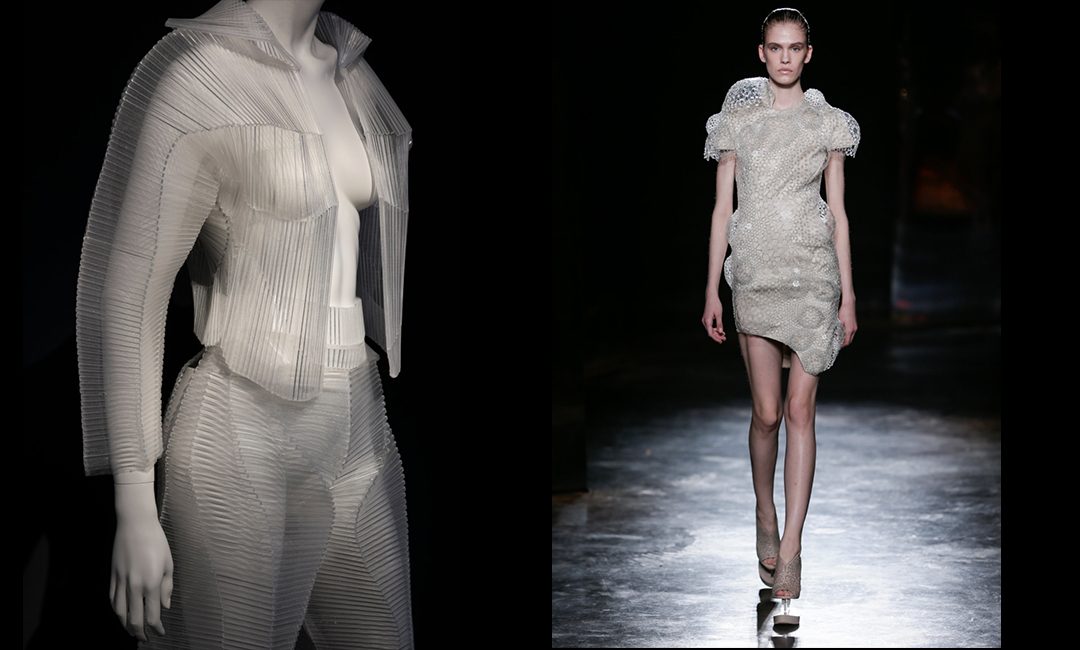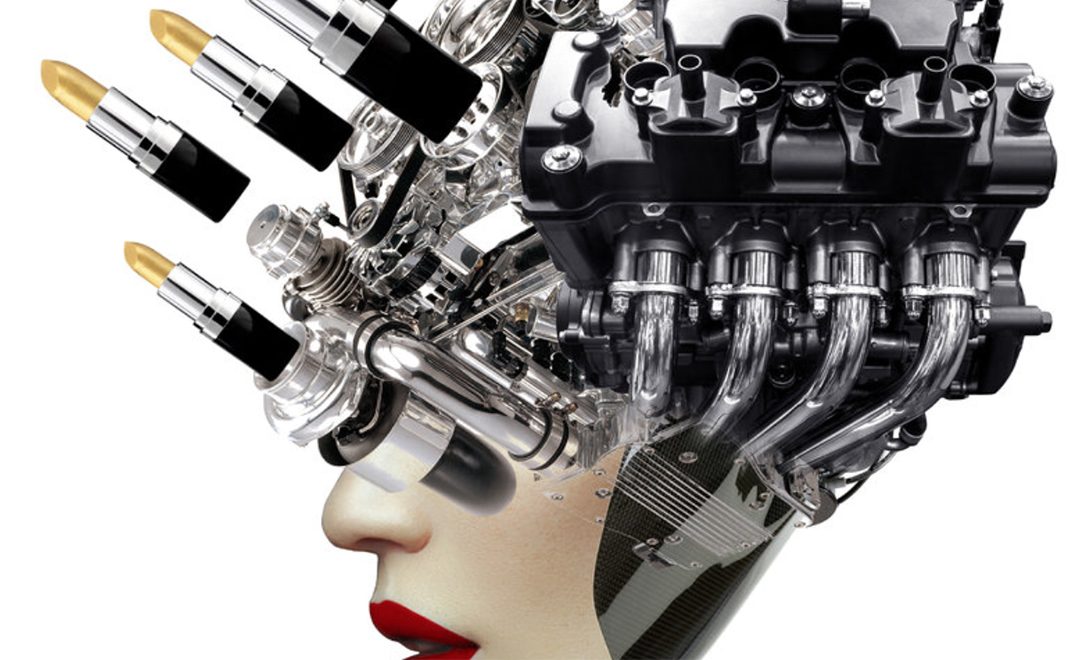
The Extraordinary Process
In “The Extraordinary Process,” nine designers — Patrik Schumacher, Ms. Hadid’s partner at Zaha Hadid Architects; Peter Do; Phoebe English; Iris van Herpen; Stephen Jones; Krystyna Kozhoma; Nasir Mazhar; Minimaforms and XO — consider how fashion and design are affected by new technologies and collaborations.
Pieces designed by Patrik Schumacher for an exhibition inspired by the work of the architect Zaha Hadid, who died in March. Credit Damian Griffiths/Courtesy of Maison Maison Non
The architect Zaha Hadid, who died unexpectedly in March, was known for her flamboyant and very personal fashion sense. While her architectural practice become famous for large-scale, soaring structures, like the opera house in Guangzhou, China, or the Maxxi museum in Rome, it has embraced fashion, jewelry design and household items with a similar fervor and spirit of innovation. “In terms of form, all our projects — architecture, fashion and furniture — interest me equally,” Ms. Hadid said in a 2015 interview.
Here are edited extracts from the conversations:
Patrik Schumacher
I teach at the design lab at the Architectural Association, and we have been working on texture-like materials to use in construction. But in our architectural designs, we have done origami-style curved folding. It’s a world of forms, more than anything, and then you seek customization. For the exhibition, I’ve designed a three-piece suit using neoprene and mesh because I want that elasticity and comfort. Instead of buttons, there are zippers, and the way the suit is constructed and layered is unconventional. At the same time, it is still recognizably a suit, elegant and very wearable, and you could go jogging after dinner without changing.
Krystyna Kozhoma
A design by Krystyna Kozhoma. Credit Damian Griffiths/Maison Maison Non
I saw a video about curved folding in architecture, and it inspired me to create clothes with programmed shapes. So I’ve embedded clear bars in the fabric of a jacket and trousers to create a structured shape. I worked with an engineer, and there was no pattern cutting; the clothes were made by a computer program. That’s still limited in fashion and mostly used for 3-D printing. This is a translation from architecture to fashion, and the shapes and fluidity of the lines show how much my work is inspired by Zaha. She took a lot of inspiration from nature but then computerized it. What’s interesting is that if the embedded material reacted to light, or temperature, you could make the garment a smart one. That’s the next project.
Iris van Herpen
From Iris van Herpen’s Lucid collection. Credit Iris Van Herpen Lucid Collection/AW16
I’m showing a dress from my Lucid collection that is built of thousands of small transparent pieces. They create a bubble or halo around the body, and around the dress we have built an installation of optical light feeds from thin, transparent sheets that bend the light. From each angle, you see the garment in a different perspective and with a sense of movement. For me, that reflects the future: uncertain and personal to each individual. I think Zaha’s work is a beautiful balance between the futuristic and the organic, and I tried to stay true to that balance.
Peter Do
Peter Do made a unisex coat, sweaters and boots. Credit Damian Griffiths/Courtesy of Maison Maison Non
I was thinking about minimizing one’s wardrobe and functionality, so I used a single yarn, made from cellophane, woven in many different ways, and made a unisex coat, sweaters and boots. Each looks different because of the way it is fabricated and layered. I worked with Stoll, a knitwear company in New York who make incredible knitting machines that can do extraordinary things. In the future, I think they’ll be much more simple to use, and I had this idea that everyone could have a Stoll machine at home, download your patterns, choose your yarns and your garment would be knitted by the time you got home from work.
Phoebe English
Phoebe English’s piece. Credit Damian Griffiths/Courtesy of Maison Maison Non
I realized, when I got the brief, that I felt a bit frightened of the future. So I designed an enclosure or private space, a kind of safety shell. It’s constructed from a heavily smocked textile with very closely packed pleating. It’s half calico and half plastic, so it has both a rawness and a sheen. I’ve always admired the shapes and forms of Zaha’s work; there is something about that fluid line that I feel has a strong feminine aesthetic. That has been a big influence on me. When people envisage future design, it often looks hard and polished and technological. I wanted something with a different vision.
Stephen Jones
Photo
Stephen Jones’s design. Credit Damian Griffiths/Courtesy of Maison Maison Non
Zaha was a client of mine, and I felt we had a similar approach. She made forms, constructions which relate to people, and I do the same thing as a milliner, but put them on people’s heads. She once gave me a sketch of a vortex that she had used as a design element in a restaurant in Sapporo, and I took that as my inspiration. My tribute to her is a red, spinning vortex hat over a stool she designed and a cushion made from the Issey Miyake pleated fabric she always wore. For me, it’s an idea of energy, speed and transformation. I love the idea that in the future you’ll put a magical hat on, and it will make you feel a certain way.
Foot Fighters
Our shoes are beautifully crafted in Spain and thoughtfully designed in New York City, using the highest quality materials made from knowing, experienced hands. Our designs are timeless yet current, classic yet contemporary. As we strive to make the best shoes, we aim to tell the story of every pair.

Florence and the Machine.
Top Tech Moments in Recent Fashion History.
